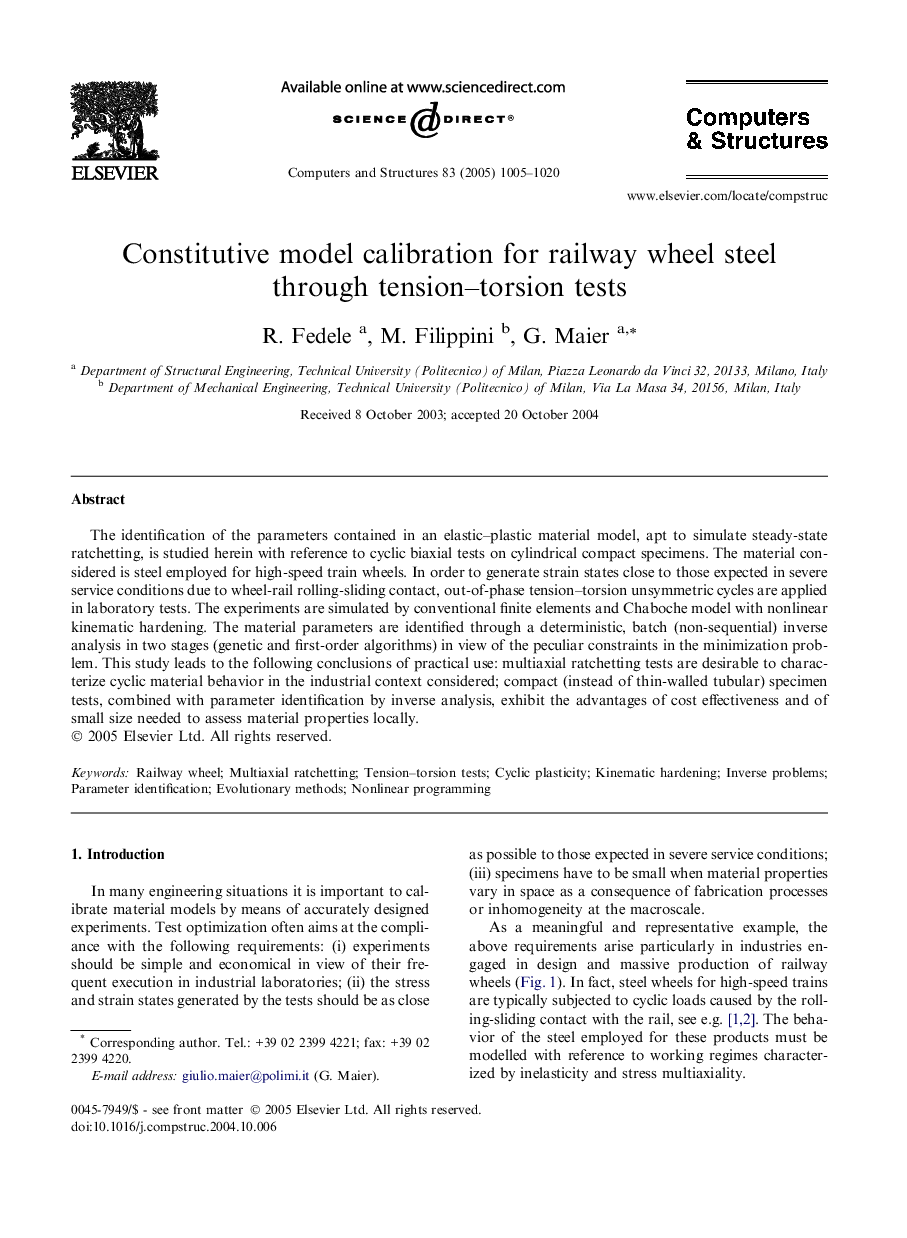| Article ID | Journal | Published Year | Pages | File Type |
|---|---|---|---|---|
| 9668199 | Computers & Structures | 2005 | 16 Pages |
Abstract
The identification of the parameters contained in an elastic-plastic material model, apt to simulate steady-state ratchetting, is studied herein with reference to cyclic biaxial tests on cylindrical compact specimens. The material considered is steel employed for high-speed train wheels. In order to generate strain states close to those expected in severe service conditions due to wheel-rail rolling-sliding contact, out-of-phase tension-torsion unsymmetric cycles are applied in laboratory tests. The experiments are simulated by conventional finite elements and Chaboche model with nonlinear kinematic hardening. The material parameters are identified through a deterministic, batch (non-sequential) inverse analysis in two stages (genetic and first-order algorithms) in view of the peculiar constraints in the minimization problem. This study leads to the following conclusions of practical use: multiaxial ratchetting tests are desirable to characterize cyclic material behavior in the industrial context considered; compact (instead of thin-walled tubular) specimen tests, combined with parameter identification by inverse analysis, exhibit the advantages of cost effectiveness and of small size needed to assess material properties locally.
Keywords
Related Topics
Physical Sciences and Engineering
Computer Science
Computer Science Applications
Authors
R. Fedele, M. Filippini, G. Maier,
